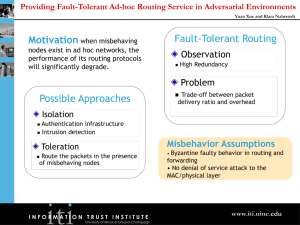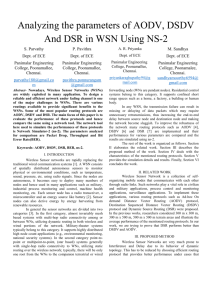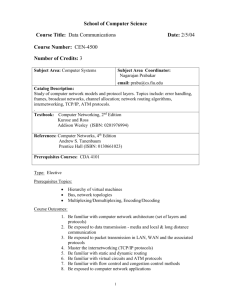Performance Comparison of Manet Routing Protocols Under UDP... TCP Traffics Abstract
advertisement
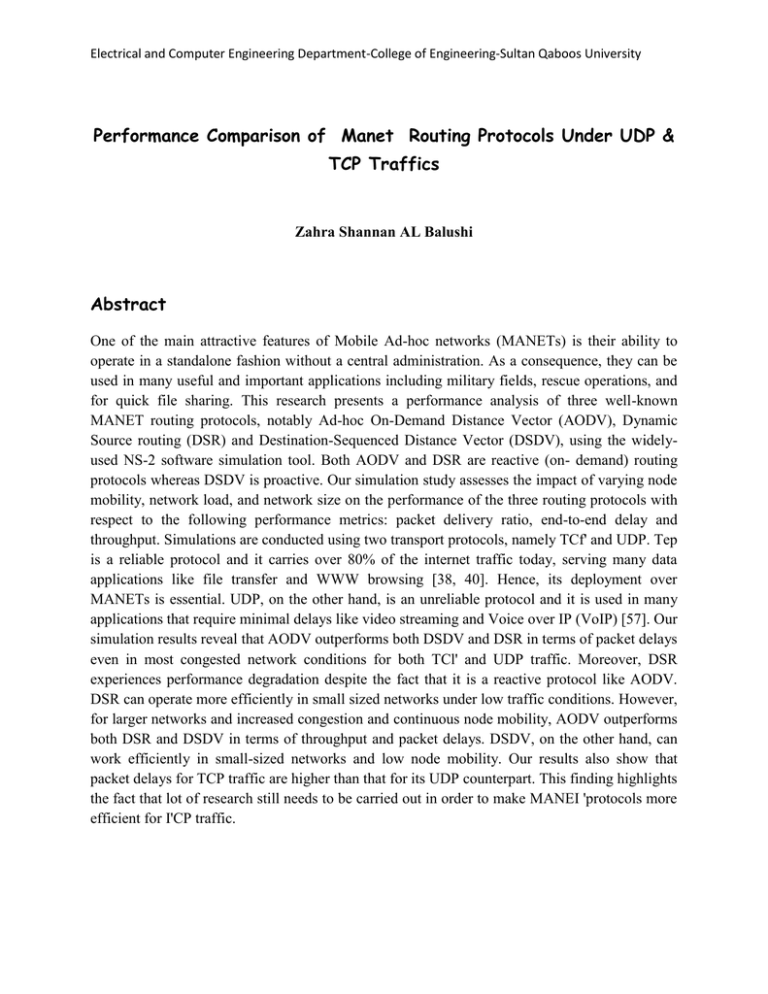
Electrical and Computer Engineering Department-College of Engineering-Sultan Qaboos University Performance Comparison of Manet Routing Protocols Under UDP & TCP Traffics Zahra Shannan AL Balushi Abstract One of the main attractive features of Mobile Ad-hoc networks (MANETs) is their ability to operate in a standalone fashion without a central administration. As a consequence, they can be used in many useful and important applications including military fields, rescue operations, and for quick file sharing. This research presents a performance analysis of three well-known MANET routing protocols, notably Ad-hoc On-Demand Distance Vector (AODV), Dynamic Source routing (DSR) and Destination-Sequenced Distance Vector (DSDV), using the widelyused NS-2 software simulation tool. Both AODV and DSR are reactive (on- demand) routing protocols whereas DSDV is proactive. Our simulation study assesses the impact of varying node mobility, network load, and network size on the performance of the three routing protocols with respect to the following performance metrics: packet delivery ratio, end-to-end delay and throughput. Simulations are conducted using two transport protocols, namely TCf' and UDP. Tep is a reliable protocol and it carries over 80% of the internet traffic today, serving many data applications like file transfer and WWW browsing [38, 40]. Hence, its deployment over MANETs is essential. UDP, on the other hand, is an unreliable protocol and it is used in many applications that require minimal delays like video streaming and Voice over IP (VoIP) [57]. Our simulation results reveal that AODV outperforms both DSDV and DSR in terms of packet delays even in most congested network conditions for both TCl' and UDP traffic. Moreover, DSR experiences performance degradation despite the fact that it is a reactive protocol like AODV. DSR can operate more efficiently in small sized networks under low traffic conditions. However, for larger networks and increased congestion and continuous node mobility, AODV outperforms both DSR and DSDV in terms of throughput and packet delays. DSDV, on the other hand, can work efficiently in small-sized networks and low node mobility. Our results also show that packet delays for TCP traffic are higher than that for its UDP counterpart. This finding highlights the fact that lot of research still needs to be carried out in order to make MANEI 'protocols more efficient for I'CP traffic.
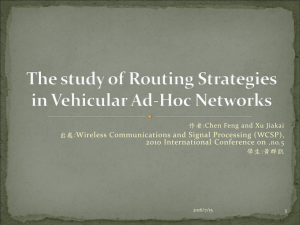
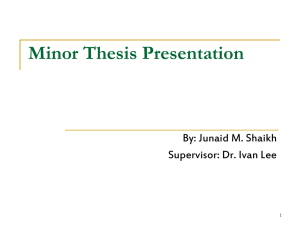



![Internetworking Technologies [Opens in New Window]](http://s3.studylib.net/store/data/007474950_1-04ba8ede092e0c026d6f82bb0c5b9cb6-300x300.png)
